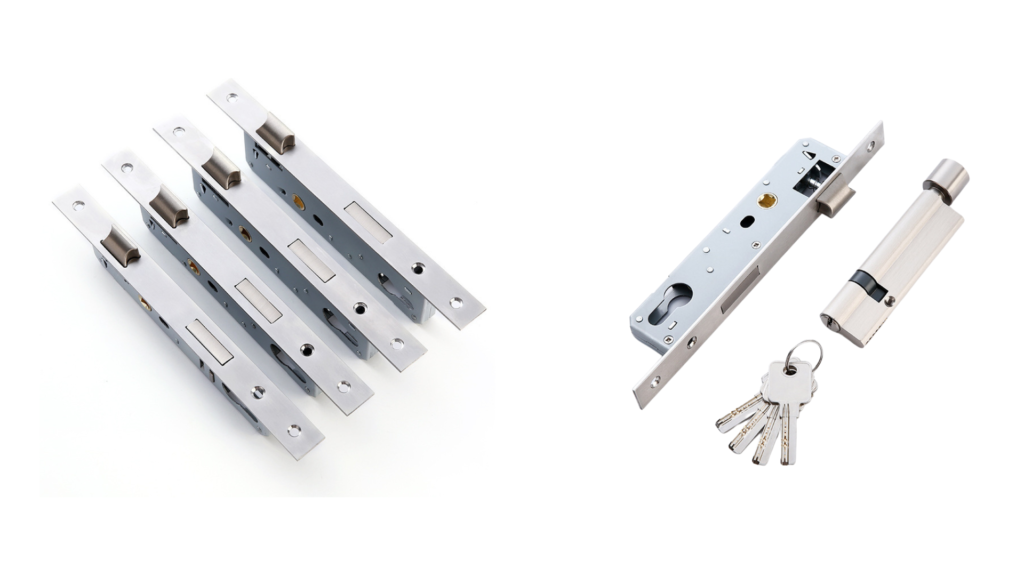In recent years, aluminum doors have become a preferred choice for both residential and commercial spaces. Known for their durability, modern aesthetics, and minimal maintenance requirements, these doors offer a stylish and functional solution. However, one critical element often overlooked is the selection of the proper door lock and handle, which not only influences the door’s overall appearance but also impacts its security.

Unlike wooden doors, which feature thicker profiles that can accommodate standard mortise locks, aluminum doors typically have narrower profiles made from aluminum or PVC frames. Because of this, traditional locks designed for wooden doors cannot be used. Instead, a narrow body lock is necessary for securing aluminum doors effectively.
Why Narrow Body Locks Are Essential for Aluminum Doors
Aluminum doors are typically constructed with thin aluminum profile frames and glass panels, which result in a narrower overall door structure compared to traditional wooden doors. This presents a challenge when choosing locks. Standard mortise locks, often used in wooden doors, are too bulky for aluminum profiles. Mortise locks are designed for larger, thicker frames, making them incompatible with the slim profile of aluminum doors.
Narrow body locks, designed specifically for slim profiles, provide a secure and reliable option for these types of doors. These locks are built to fit within the narrow confines of aluminum frames while offering the same level of security as more traditional locks. Choosing the right narrow body lock is crucial to maintaining the door’s aesthetic appeal without compromising on security.
How to Choose the Right Narrow Body Lock
When selecting a narrow body lock for an aluminum door, it’s important to consider various size specifications to ensure a proper fit. Key factors include:
- Backset Size: The backset refers to the distance from the edge of the door to the center of the lock mechanism. For narrow body locks, common backset sizes are 20mm, 25mm, 30mm, and 35mm. The choice of backset size depends on the dimensions of the aluminum profile, ensuring that the lock fits properly within the door.
- C to C Distance: The C to C distance is the measurement between the centers of the lock and the handle. The most common C to C distances for narrow body locks are 85mm and 92mm. This dimension ensures that the handle and lock align properly, allowing smooth operation and a secure fit.

Where Are Narrow Body Locks Typically Used?
Narrow body locks are widely utilized in various commercial and residential settings, especially where aluminum doors or partitions are involved. Here are two common application scenarios:
- Ground-Floor Shops Along Streets Many storefronts feature aluminum alloy frame doors with large glass panels. These doors allow ample natural light into the store and provide an unobstructed view of the products on display to passersby. Narrow body locks are ideal for such doors as they provide a sleek, modern solution without compromising security. They also ensure that the door’s appearance remains clean and visually appealing.
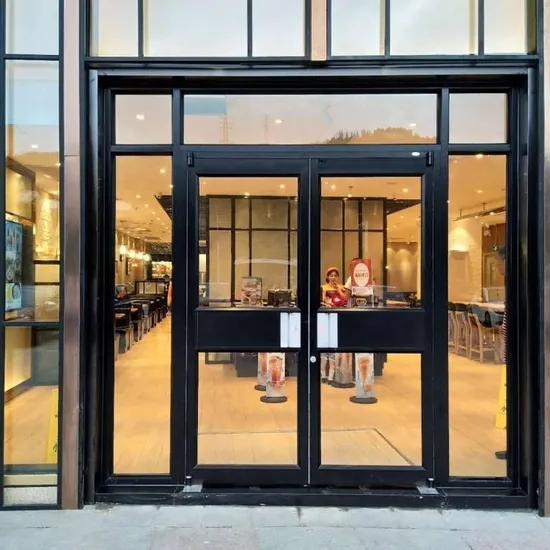
- Office Partitions in Commercial Spaces Commercial office spaces, especially in large open-plan environments, often require aluminum alloy frame glass partitions to divide the space into smaller offices or meeting rooms. In these settings, narrow body locks are commonly used to secure the doors. They offer a practical and aesthetically pleasing option for ensuring the security of partition doors while maintaining a cohesive design throughout the office space.

Types of Narrow Body Locks
There are several types of narrow body locks, each designed to suit different needs:
- Sash lock: the most commonly used type.
- Latch Bolt Lock: This is a basic type of narrow body lock that relies on a latch bolt for securing the door. It is typically used in situations where frequent door usage doesn’t necessitate an additional deadbolt for extra security.
- Deadbolt Lock: Deadbolt locks provide a higher level of security as they rely solely on a deadbolt to secure the door. These locks are ideal for doors that are less frequently opened and closed, such as those used in storage rooms or areas where additional security is needed.
- Roller Lock: This lock combines a roller lock and a deadbolt, offering smooth operation for doors that are opened and closed frequently. The roller lock allows the door to slide easily, while the deadbolt provides added security, making it a great choice for high-traffic doors or two-way doors.

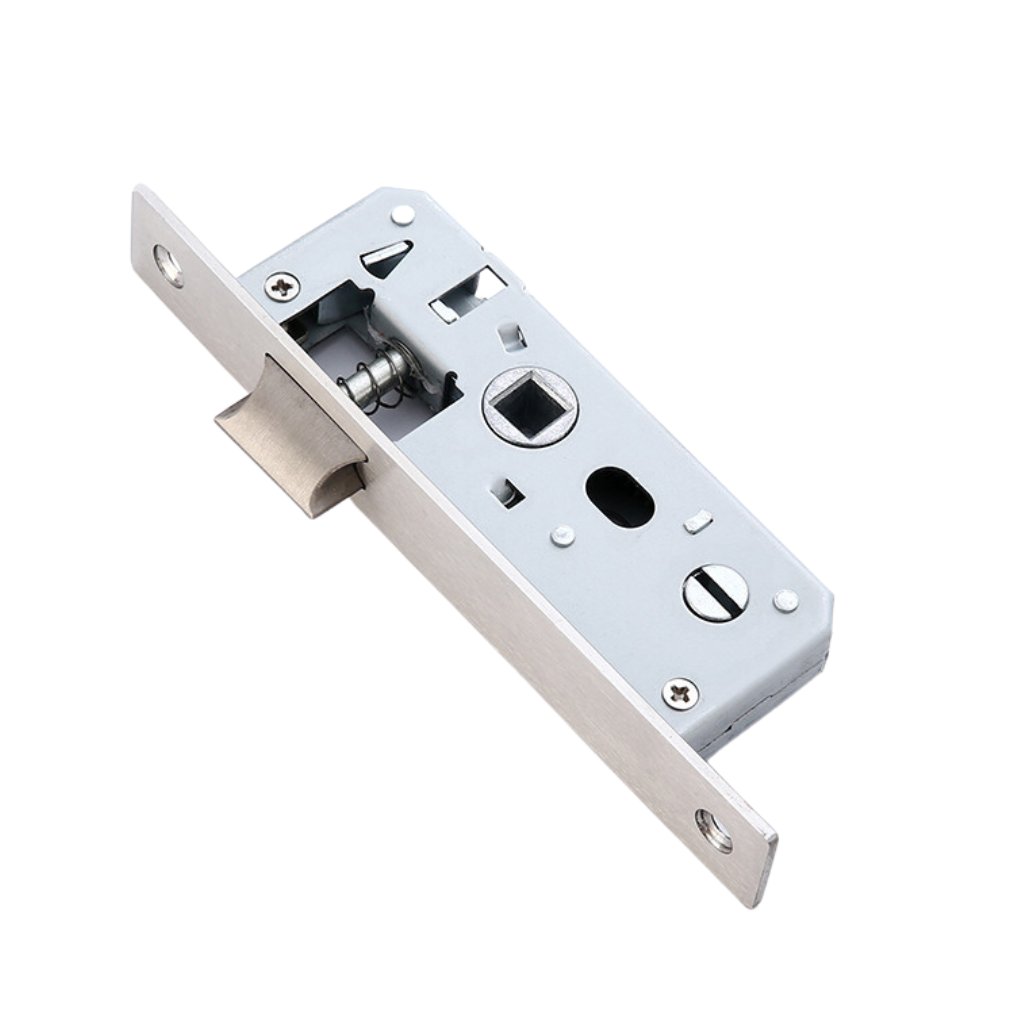
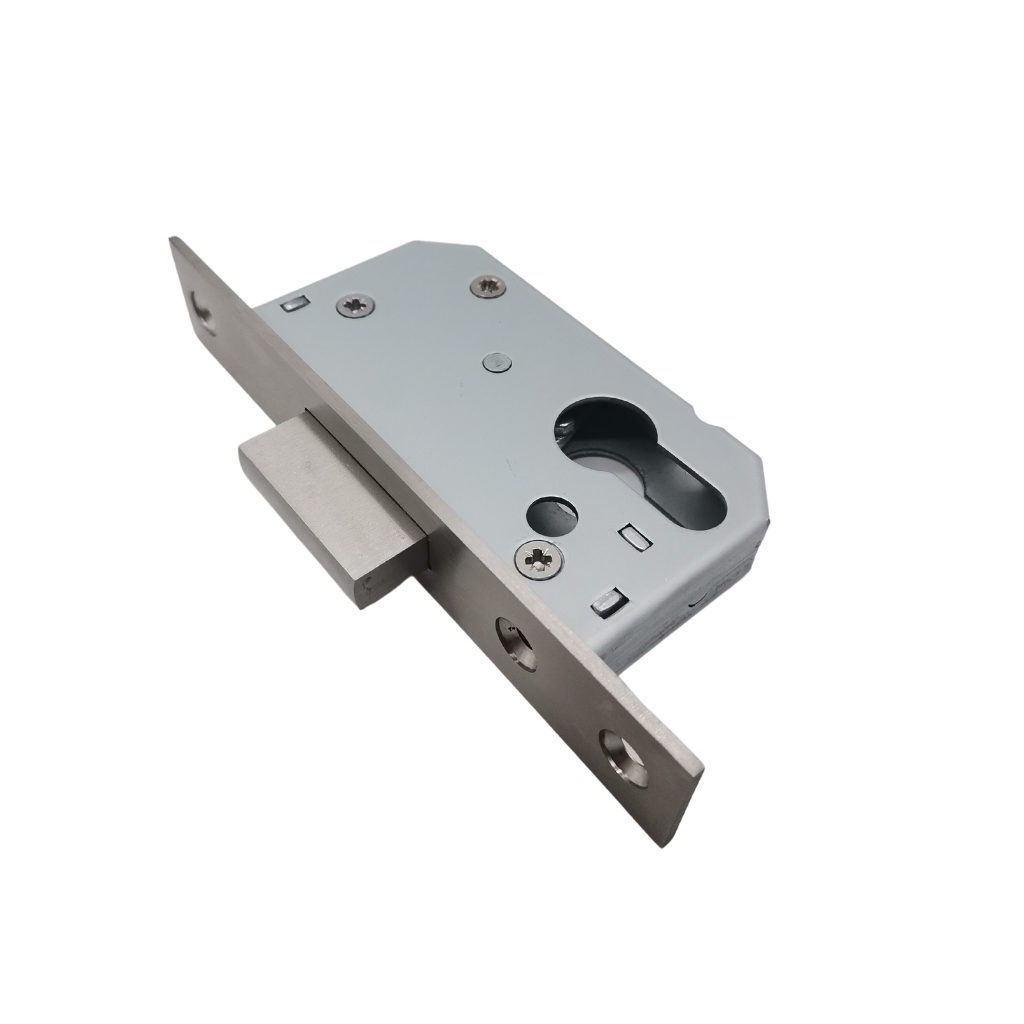
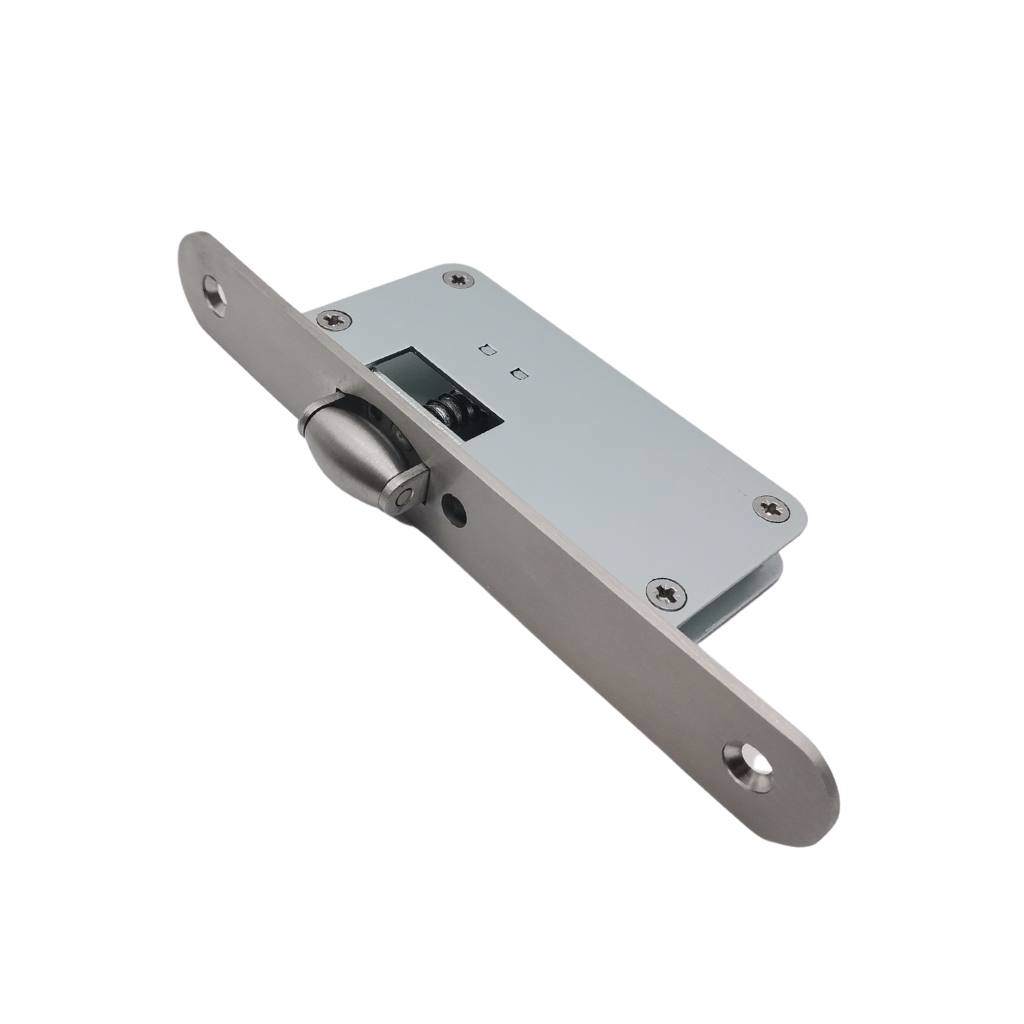
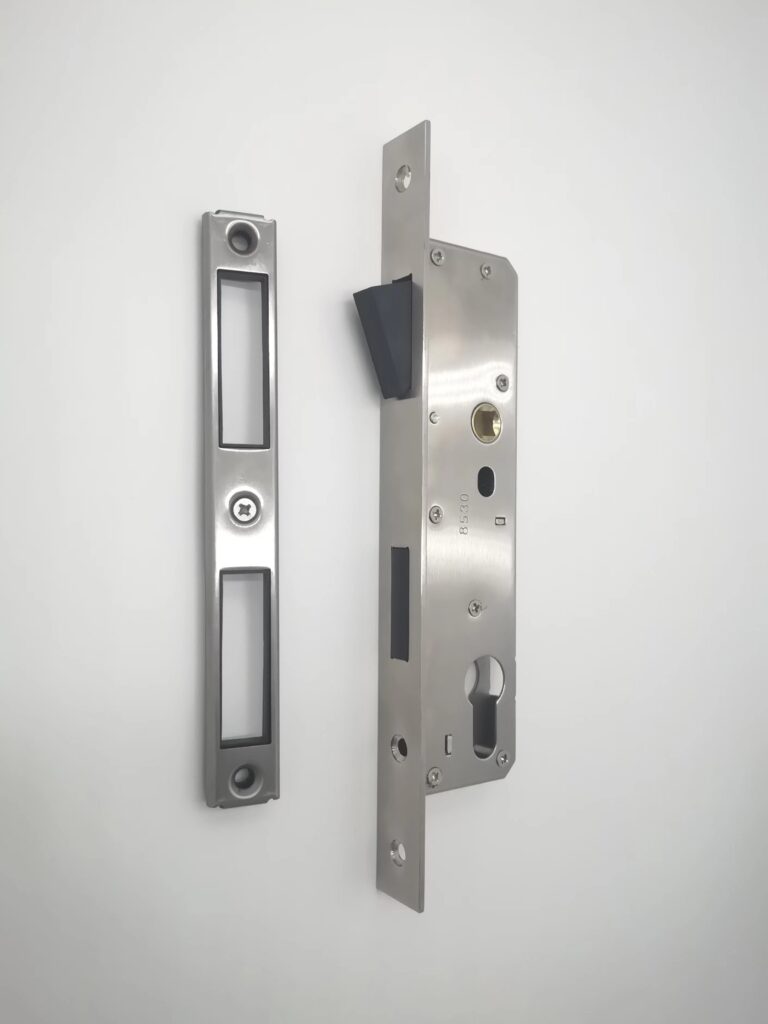
Materials Used in Narrow Body Locks
The materials used in narrow body locks contribute significantly to their durability and effectiveness. Here are the common materials found in various parts of the lock:
- Lock Case:
a. Stainless Steel: Known for its high strength and corrosion resistance, stainless steel is a top choice for lock cases that need to withstand the elements and offer long-lasting performance.1. Stainless Steel: Known for its high strength and corrosion resistance, stainless steel is a top choice for lock cases that need to withstand the elements and offer long-lasting performance.
b. Galvanized Steel with Blue Coating: This steel has a protective blue coating that enhances its resistance to corrosion, making it suitable for exterior doors.
c. Galvanized Steel with Black Coating: Another variation of galvanized steel, this option provides added protection against corrosion while offering a more aesthetically neutral black finish.
d. Steel: The most cost-effective option, steel offers a basic level of durability but may be more prone to corrosion compared to stainless steel.
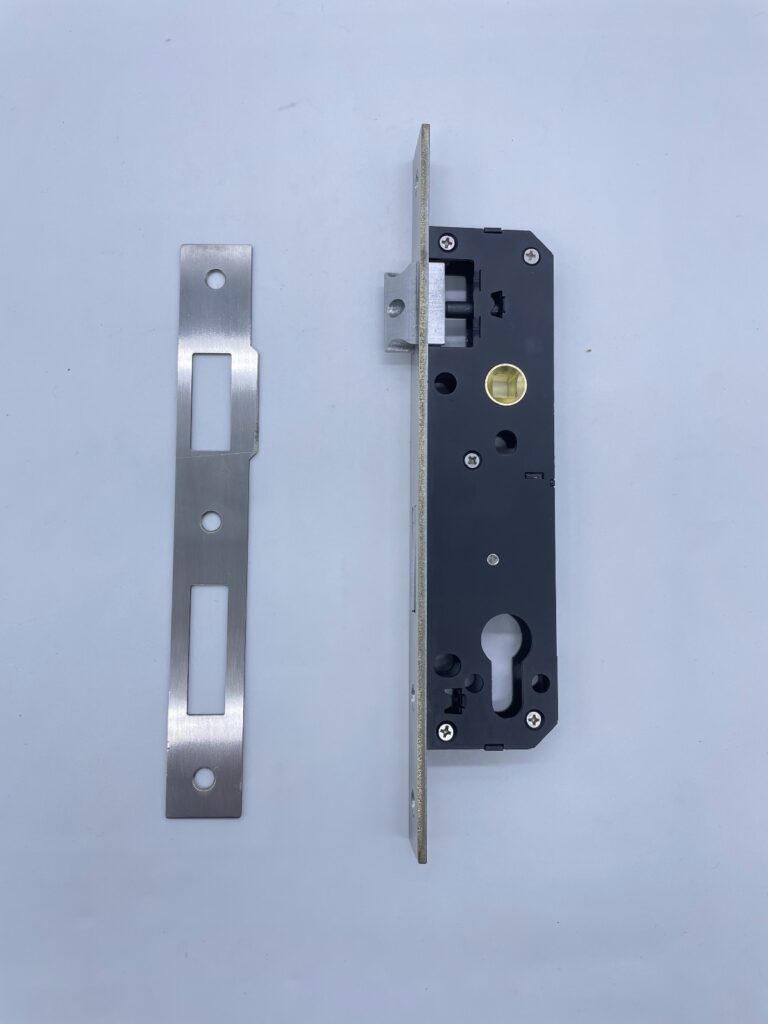
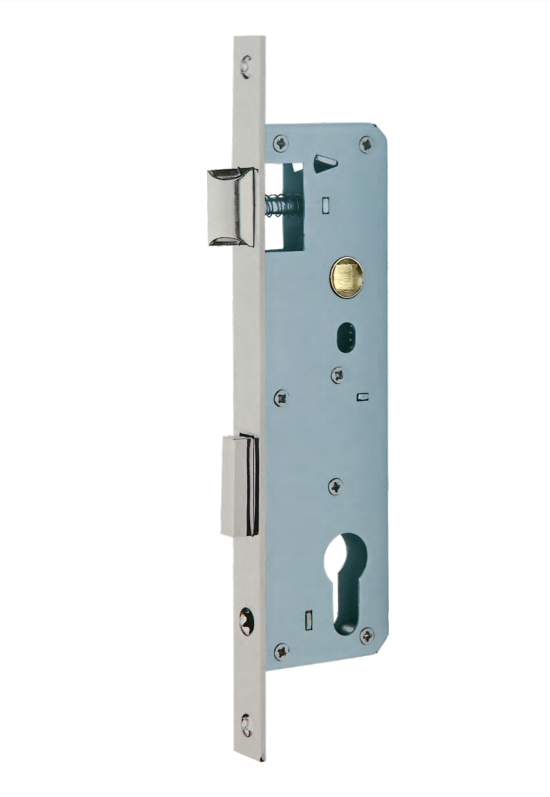
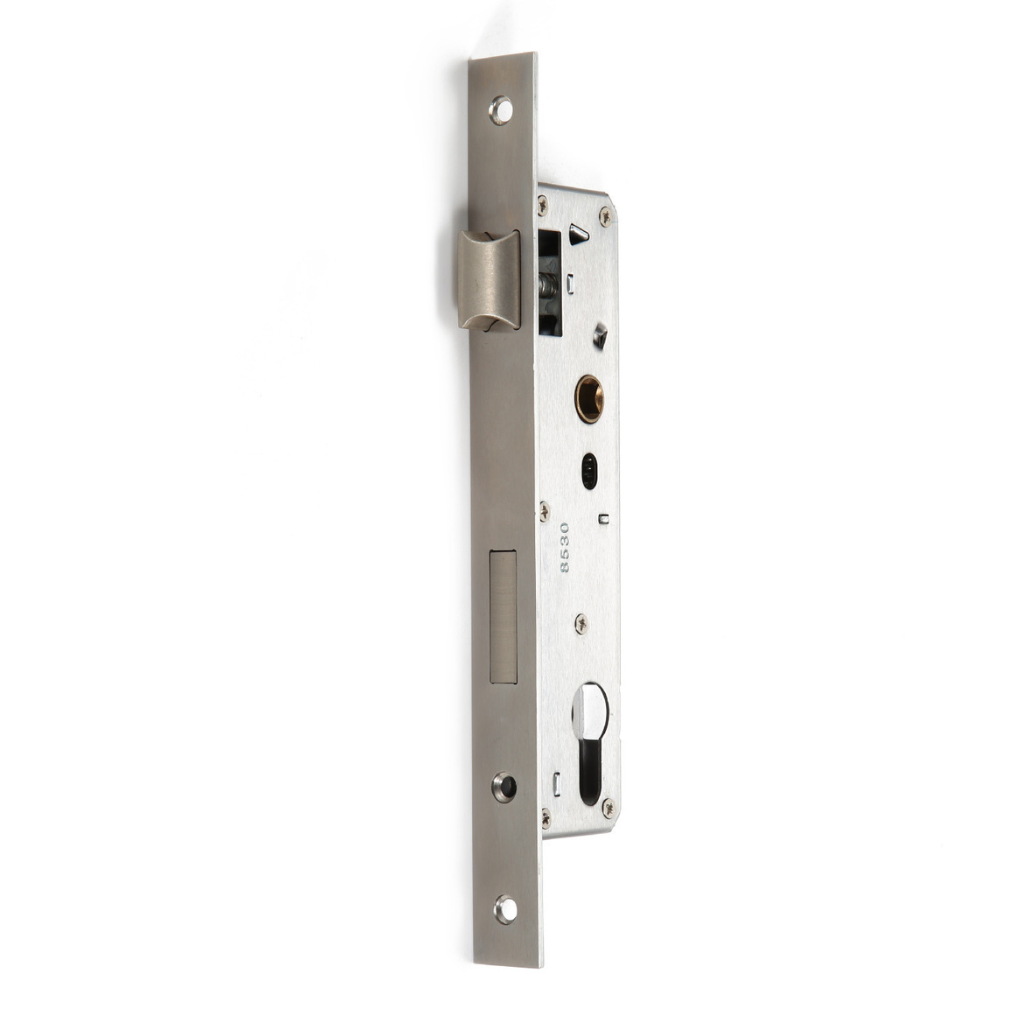
2. Latch Bolt, Roller, and Deadbolt:
a. Zinc Alloy: Often used for components like the latch bolt or roller, zinc alloy provides corrosion resistance while being lightweight and durable.
b. Stainless Steel: Used in high-strength applications, stainless steel is ideal for critical components such as deadbolts, ensuring they stand up to wear and tear.
3. Forend Plate:
Stainless Steel 304/201: These stainless steel grades are commonly used for forend plates, offering robust corrosion resistance and strength.
Additional Features of Narrow Body Locks
Modern narrow body locks come with several adjustable features to accommodate different door configurations:
- Adjustable Latch Direction: Since aluminum doors may open either to the left or to the right, having an adjustable latch allows the lock to be adapted for different door orientations, ensuring it works smoothly regardless of how the door opens.
- Adjustable Extension Length: Some locks feature an adjustable tongue or latch bolt that can be extended or shortened to fit varying door gap sizes. This adaptability ensures that the lock functions properly, even if the door gaps vary slightly.
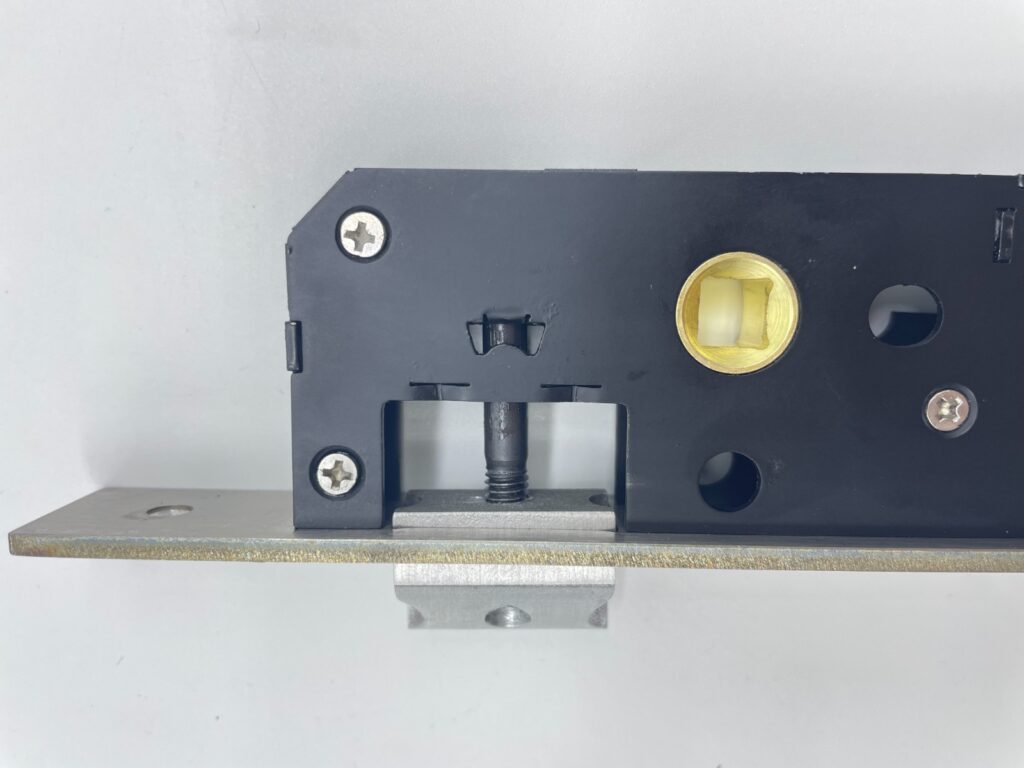
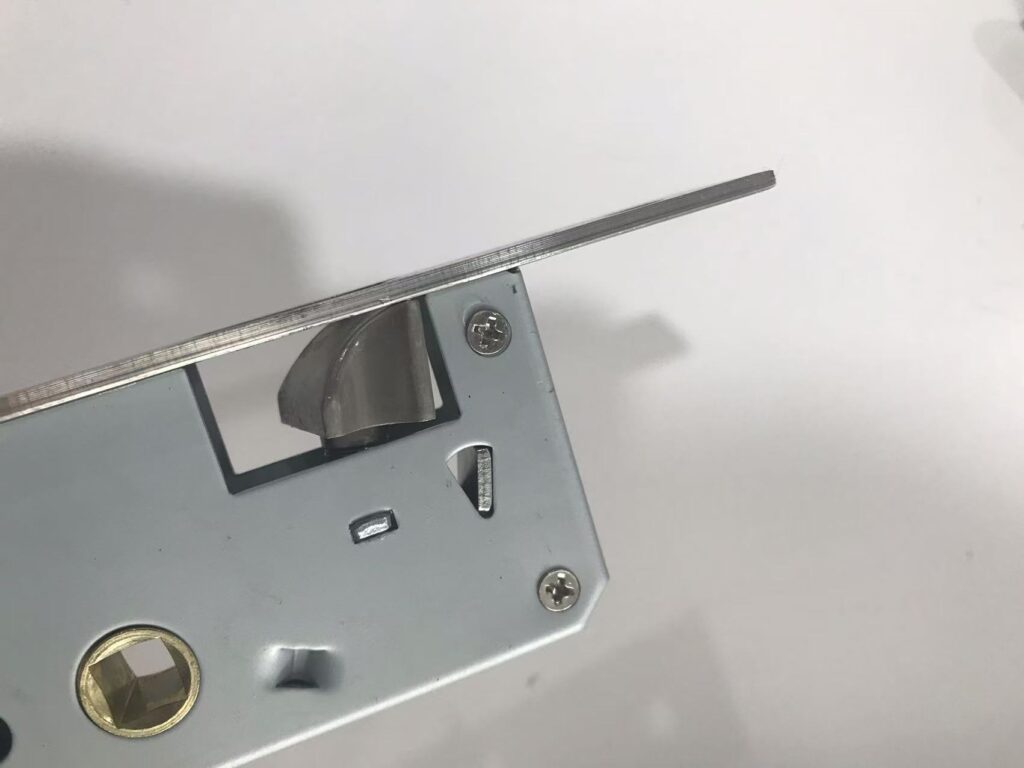
How to Select the Right Aluminum Door Lock
When choosing the right lock for an aluminum door, it is crucial to consider various factors, including the door’s profile, the level of security needed, and the type of environment the door is in (e.g., commercial, residential, office spaces). The profile refers to the thickness and shape of the door’s edge, which can vary depending on the manufacturer. Measuring the profile accurately will help ensure that the lock fits well and operates smoothly.
Aluminum door locks come in various styles and strengths, ranging from simple latch bolts to more advanced multi-point locking systems. The lock you choose should match the security requirements of the space, as well as the type of door and its location.
Conclusion
Choosing the right narrow body lock for an aluminum door is essential for both security and aesthetics. A high-quality lock enhances the door’s functionality while ensuring that it operates smoothly and securely. By considering factors such as the door’s profile, security needs, and the environment in which it is installed, you can ensure that your aluminum doors remain both stylish and safe for years to come. Investing in the correct lock not only provides peace of mind but also ensures that the door complements the overall design of your space.

